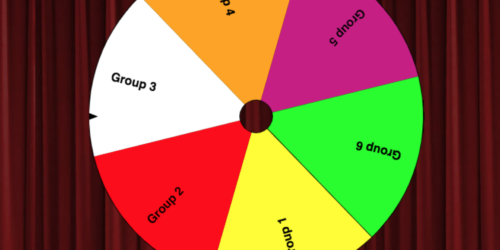
Team Contracts for Healthy Group Work
By Rachel Schultz, B.A., B.Ed., M.Ed, OCT, TESL
Professor, School of Interdisciplinary Studies
This teaching tip describes the value of team contracts for group work the Group Dynamics course, and provides a sample team contract for download along with tips for facilitating team contracts for student groups.

As a faculty member for about 13 years with Interdisciplinary Studies, I have been evolving my practice of engaging students in collaborative learning both online and in-class to incorporate team contracts. Part of my role as a member of the Group Dynamics “consultant team” involves developing and delivering a team contract activity that offers structure and supports to help students work more effectively in groups while minimizing conflict.
Conflict in Group Work
My time while teaching and evaluating courses with group work without a team contract activity was spent mostly in 1 of 2 ways: 1) managing conflict in teams with a non-performing member, or with no clear organizational structure, or 2) supporting teams who were unable to communicate with me at check in points, but then communicated issues too near the deadline to really catch up.
Some of the most common work conflicts among group members included unequal completion of work, disagreements between goals, issues communicating or connecting individuals on same team, and general unscholarly behaviour.
There were also an increasing number of cultural conflicts regarding expectations for how teams should function and who should be the one to decide these norms. It felt as if there was no mechanism for ensuring fair distribution of grades or way to support students who were working together while respecting their autonomy to manage the group in a way that best suited their needs.
These conflict situations were particularly challenging in asynchronous online courses, and could lead to student disengagement in in-class courses or follow-up work to defend student appeals.
Supporting Group Work with Team Contracts
A team contract is an agreement amongst all group members about the shared group processes and behavioural expectations. Contract points usually relate to expectations regarding quality of work, adherence to team deadlines, communication, and pre-agreed upon consequences for contract violations.
In order for the idea of a team contract to take hold, students often require gentle permission and examples of situations involving contracts from groups in past classes to really feel comfortable openly discussing and drafting an effective team contract. It’s important for the professor to provide feedback on the team contract before it is signed and finalized by each group member to ensure common situations are effectively planned for.
If contracts are violated, students usually experiment, starting with a documented warning and progressing to removal from the team as a final resolution for severe and repeated failure to positively contribute to the team. A student who agrees to the latter example has forfeited their right to future grades earned by the team (which fortunately we don’t have to enforce often).
In the case of the Group Dynamics course, the professor (in a Consultant role) provides structure as students apply their team contract in the pursuit of course and team goals. Often a warning to students about the need to review the team contract is enough to prompt productive group discussion that yields a more cohesive and effective team without the application of a penalty.
The Benefits of Team Contracts
I have noticed improvement in the quality of group work when team contracts are used. It is one of the pleasures of the job to sit in on critical group conversation of contract points, which often go deeper than the initial flashpoint of the issue. I’ve seen students agree to rework their contract to adapt to changing situations, bravely use the contract to navigate challenging conversations with their peers, and candidly share stories of their experiences in ways that empowers individuals and broadens perspectives.
With the implementation of a team contract and mechanism that has students outline division of work, process expectations, documentation, and enact their own team norms, faculty are able to concentrate on more rewarding ongoing formative evaluation, which has an immediate impact on student collaboration and team experience.
As well, the team contract shows students that we do not make assumptions that all students have the same cultural experience and expectations of team work, but rather that we acknowledge that all members of a team are valued in the ongoing dialogue about the team process.
Download the Group Dynamics Team Contract Exemplar
Tips for Facilitating Team Contracts
- Align with learning outcomes: Spend time thinking through how you are addressing your course outcomes and what you are asking of students in the context of their larger schedule. Attempt to align contract or charter expectations to your field and with other program courses.
- Give feedback and grades: Provide feedback and grades for a team contract before it is finalized and enacted by a team. A good contract must account for a wide variety of situations and include documentation expectations – it is difficult to manage behaviour that is not accounted for on the contract. Many of the college standards can be found on the website and can be used to create your contract template. See Academic Offences (unscholarly behaviour), APA Formatting, Program Handbooks, etc.
- Address concerns directly: Show students that the team agreements are important by taking time to seriously address student contract concerns as they come up. Schedule a check in point with a team leader or reach out if teams don’t connect with you. You may have to stimulate discussion to get students to think more deeply if they report no problems – watch out for groupthink or dominating members in these cases. Document all group issues through email or personal notes as you go, as these are often valuable later!
- Continually improve the contract activity: Review the documents you make on group issues to note any patterns. Also, listen to your students’ comments on your evaluation choices and be prepared to make revisions for next time.
For more information on the Group Dynamics course, see the teaching story, Building Future Success in Teamwork with Group Dynamics.







1 Response